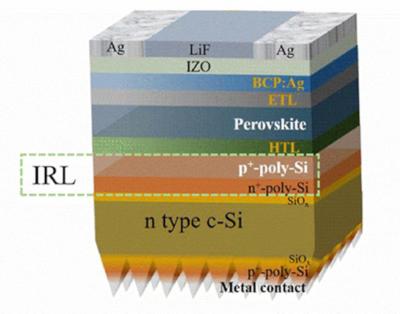Researchers at Chinese Academy of Sciences (CAS) have fabricated an intermediate recombination layer (IRL) featuring a heavily doped boron/phosphorus polysilicon tunneling junction, with tunnel oxide passivated contact (TOPCon) silicon cells serving as the bottom cell for perovskite/TOPCon tandem solar cells (TSCs).
In perovskite/silicon TSCs, the IRL is an important structure electrically connecting the top-side perovskite and bottom-side silicon sub-cells, significantly influencing the overall device performance. The traditional IRL often uses ITO materials to ensure high transmittance and good electrical properties, which, however, usually leads to issues such as sputtering damage and low temperature process limitations.
The team prepared p+ and n+ poly-Si through the plasma-enhanced vapor chemical deposition technique (PECVD) to fabricate tunneling recombination junctions. The team studied the performance of this tunneling junction, focusing on factors such as annealing method, temperature, and polysilicon thickness to achieve superior passivation and electrical transport properties.
By optimizing these key parameters, the scientists effectively controlled dopant interdiffusion in the poly-Si, resulting in tunneling recombination junctions with low contact resistivity and outstanding passivation performance. Ultimately, they achieved an efficiency of 27.6% for the proof-of-concept perovskite/TOPCon TSCs with the tunneling recombination junction.
Moreover, they utilized finite element analysis to explore the influence of poly-Si layer thickness on the photogenerated current (Jph) of the device, offering insights for future improvement.


